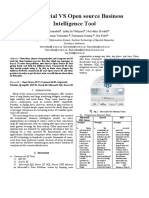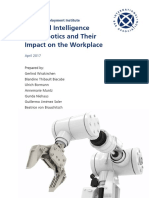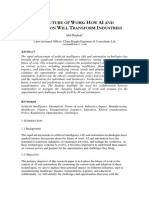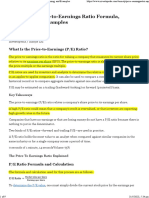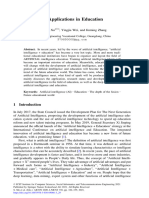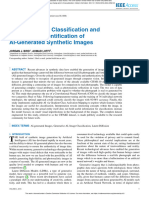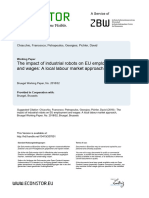0% found this document useful (0 votes)
133 views4 pages1:-What Is Robotics ?: Ipp Presentation ROLL NO: - 1598009 (Topic: - Artificial Intellligence (In Robotics)
Robotics is an interdisciplinary field that involves designing, building, and using robots. Robots are useful for performing tasks that are dangerous, repetitive, or require precision. They can work faster than humans. Some key developments and applications of robotics include using robots for industrial manufacturing, using collaborative robots that work safely with humans, deploying robots beyond factories for logistics, healthcare, and more. Robotics is also being applied to ecommerce fulfillment and delivery.
Uploaded by
Praneeta Krishna DesaiCopyright
© © All Rights Reserved
We take content rights seriously. If you suspect this is your content, claim it here.
Available Formats
Download as RTF, PDF, TXT or read online on Scribd
0% found this document useful (0 votes)
133 views4 pages1:-What Is Robotics ?: Ipp Presentation ROLL NO: - 1598009 (Topic: - Artificial Intellligence (In Robotics)
Robotics is an interdisciplinary field that involves designing, building, and using robots. Robots are useful for performing tasks that are dangerous, repetitive, or require precision. They can work faster than humans. Some key developments and applications of robotics include using robots for industrial manufacturing, using collaborative robots that work safely with humans, deploying robots beyond factories for logistics, healthcare, and more. Robotics is also being applied to ecommerce fulfillment and delivery.
Uploaded by
Praneeta Krishna DesaiCopyright
© © All Rights Reserved
We take content rights seriously. If you suspect this is your content, claim it here.
Available Formats
Download as RTF, PDF, TXT or read online on Scribd
/ 4









